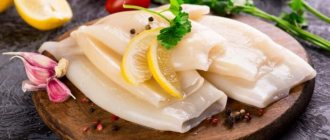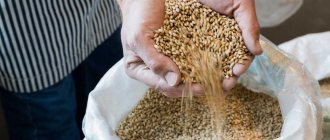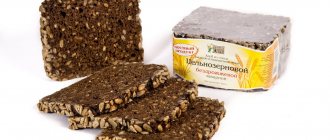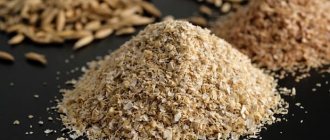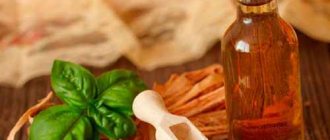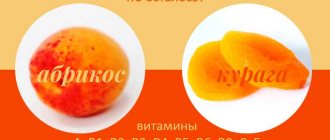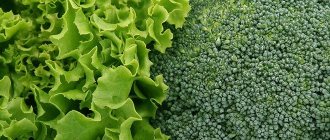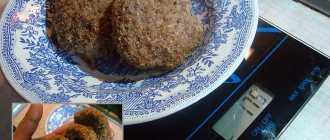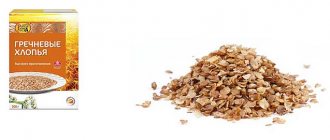Subscribe to topic
Notification by e-mail about replies to a topic during your absence from the forum.
Subscribe to this forum
Notification by e-mail about new topics on the forum during your absence from the forum.
Download/Print theme
Download the theme in various formats or view a printable version of the theme.
Counting calories is one of the most correct schemes for quality weight loss or, conversely, weight gain. To lose weight, as you know, you need to create a calorie deficit, for muscle volume - a surplus. But the calorie content of foods must be determined correctly. And what about raw foods and prepared meals? Let's take a closer look.
Why is it important?
Any calorie table usually shows the calorie content of a raw, unprocessed product per 100 grams. Probably, if we cook 100 grams of oatmeal in water without adding anything, we will get approximately the same calorie content for this entire portion. Only now it will no longer contain 100 grams of weight... But what if the oatmeal is cooked in milk? How to add these “milk” calories?
Many people today use smartphone applications that contain a variety of products - both raw and boiled, different dishes, the same oatmeal with water, milk, and fruit. But how does the author of the application know how much milk you will pour and how much fruit you will put in the porridge? Will you season a fresh vegetable salad with a teaspoon of oil or a tablespoon? And all this significantly changes the calorie content of the finished dish.
Therefore, it is best, of course, to calculate the mass and calorie content of both the raw product and the finished dish from it, and proceed from these indicators. How to do this, and what needs to be taken into account? Let's take a closer look.
As you know, meat significantly decreases in volume when frying, boiling, stewing or baking, in a word, during any temperature treatment. For comparison, take a raw chicken breast and weigh it, then cook it and weigh it again - the difference will be significant. At the same time, a cooked piece of meat will have the same amount of calories as a raw one - the calorie content does not go away. If you take 240-260 grams of chicken fillet, then after cooking they will turn into 140-160 grams, no more. Of course, the weight can vary depending on the cooking method and the duration of the heat treatment (the longer it is, the less the meat will weigh when it comes out). The calories in 240-260 grams of raw breast will be about 280 kcal, and they will also remain in 140-160 grams of finished chicken. It is for this reason that you can calculate the weight of meat both raw and cooked, not forgetting the difference in weight.
How many calories are in oatmeal (oatmeal)
Oatmeal can become not only the basis for nutritious breakfasts, but also an ingredient in a wide variety of dishes - baked goods, desserts, soups. It is used to prepare decoctions and jelly that are good for the stomach, and add it to yoghurts and smoothies. Oatmeal is equally tasty in combination with milk and sweet fruits, and as a side dish for meat and fish. It is mainly boiled and baked - although the flakes can be eaten dry or slightly soaked.
Of course, the choice of oatmeal depends on the degree of processing of the cereal - the weaker the processing, the more nutrients the product retains. You can find out about this by the amount of time required to prepare the porridge: the more it is required, the higher the nutritional value. The most useful from this point of view can be considered “Hercules”
.
It is followed by “Extra”
- from the dense first grade to the fast-cooking third. But instant oatmeal cannot be called either nutritious or healthy.
From oatmeal, oatmeal is obtained (dezhen), which is used for baking bread, cookies, pancakes, pancakes and making jelly. The bran remaining as a waste product from flour production is similar in its effect on the body to whole oats. They are used in dietary nutrition, added to porridge or brewed separately.
Calorie content of oatmeal dishes
varies and depends not only on the degree of processing of the grains, but also on the method of preparation and additives.
| Calorie content of oatmeal, kcal per 100 grams | |||||
| Product | Oat bran | Oat groats | Oat flakes Extra | Oat flakes Hercules | Oatmeal (money) |
| In raw dry form | 246 | 342 | 367 | 352 | 369 |
| With milk | 110 | 102 | 130 | 113 | |
| On the water | 88 | 73 | 92 | 84 | 61 |
| With milk and butter | 146 | 160 | 143 | ||
| On water with butter | 130 | 122 | 114 | ||
| With milk and sugar | 158 | 167 | 163 | ||
| On water with sugar | 138 | 129 | 124 | ||
| With milk, butter and sugar | 190 | 204 | 190 | ||
| On water with butter and sugar | 171 | 166 | 161 | ||
| With honey | 100 | 117 | 129 | 125 | 86 |
| With raisins | 131 | 167 | 161 | ||
| With pumpkin | 63 | 94 | 91 | ||
Application in dietetics
Like all cereals, oats are very beneficial for the body. Its constant use helps reduce blood sugar levels and normalize the functioning of the liver, kidneys and gastrointestinal tract. Oatmeal with water is considered a medicinal and dietary product; By including it in your diet, you can immediately “kill two birds with one stone”: adjust your weight and improve your well-being.
Several diets have been developed based on oatmeal:
- oatmeal mono-diet (due to its severity, it is practiced for no more than 5 days, during which this porridge becomes the only food);
- oatmeal-fruit diet (porridge with a small amount of dried fruit alternates with unsweetened fruits and vegetables for a maximum of 10 days);
- diet 6 cereals (during the week, only one cereal is consumed every day, and on the last day all cereals are mixed);
- Berlin diet (in fact, this is the correct diet in which porridge is eaten for breakfast).
This porridge will be an excellent alternative to chocolates and sweet pastries during snacks. Vegetables, berries, fruits, nuts, honey or low-fat milk will add flavor and some healthy calories. If you don't have a stove or pan at hand, you can eat muesli or oatmeal cookies.
Recipes and calorie content of dishes with oatmeal
- 100 g oatmeal;
- 100 g corn flakes;
- 40 g walnuts;
- 20 g sunflower seeds;
- 20 g;
- 20 g;
- 10 g sunflower oil;
- half a glass of low-fat milk.
Chop raisins and nuts, mix with seeds and flakes. Add butter and honey and dry slightly in the oven. Pour a small portion with milk. 100 grams of this hearty breakfast will contain only 253 kcal.
- 250 g oatmeal;
- 2 medium sized apples;
- 100 g honey;
- 90 g raisins;
- 50 g butter;
- 50 ml water;
- 30 g pine nuts;
- half a glass of 1% kefir.
Grate the peeled apple and mix with cereal, raisins and nuts. Melt butter and honey over the fire, add water. Mix with dry base. Place the mixture on baking paper, place in the oven and bake for about half an hour at 165 degrees, stirring occasionally. Cool, pour a small amount of granola with kefir. The calorie content of a 100-gram serving will be 159 kcal.
Chicken soup with oatmeal
- 300 g;
- 200 g;
- 100 g oatmeal;
- 50 g;
- sprig of dill;
- salt - to taste.
While the chicken is cooking, you need to peel and cut the vegetables. Potatoes, carrots, onions and lastly flakes are added to the strained broth. The finished soup is decorated with dill. 100 grams – 105 kcal!
Oatmeal with bananas
- 2 tablespoons of oatmeal;
- 2 cups low-fat;
- a tablespoon of honey;
- a teaspoon of flour improver.
Improver, honey, and milk are successively added to the flakes, mixing thoroughly each time. The dough is poured into a mold and decorated with sliced bananas. The casserole is cooked in the oven for half an hour at 180 degrees. 100 grams of this dish will provide only 136 kcal.
Oatmeal charlotte
- half a glass of oatmeal;
- half a glass of wheat flour;
- 4 apples;
- 2 eggs;
- egg white;
- one and a half glasses of kefir (2%);
- 3 teaspoons honey;
- a teaspoon of baking powder;
- 2 g cinnamon.
Beat eggs with honey and kefir and pour this mixture over cereal and flour. Then add baking powder, cinnamon and leave the dough for 20 minutes. The apples are cut, placed in a mold, filled with dough and placed in the oven. Cooking time – about 40 minutes, temperature – 180 degrees. A 100-gram piece will add only 91 kcal to your afternoon snack.
Nuances
Even with this approach, it is unlikely that it will be possible to calculate calorie content exactly to the calorie level. The fact is that each fruit will contain a different amount of sugar, each vegetable will contain a different amount of fiber (which affects the absorption of calories), and cereals can be processed and purified differently, which will also determine their energy value. All tables from cookbooks and even calorie counting apps give only an average result for each product. Use our tips to keep your calorie counting as accurate as possible.
- When preparing porridge with milk, do not forget to add the calorie content of 100 grams of dry cereal to the calorie content of the 100 grams of milk that you poured into it.
- If you cook meat not separately from other ingredients, but, say, in gravy, add the calorie content of sour cream or cream used for it.
- To the energy value of the vegetables you stew, be sure to add the calories of the spoon of oil that you poured into the frying pan.
Oatmeal or rolled oats?
The easiest way to measure 100 grams of oatmeal is with tablespoons. They are always at hand. So, 100 grams of oatmeal is how many spoons?
Oatmeal is also different, so we have prepared what you need to measure with spoons:
- dry oatmeal;
- dry oat flakes.
And, of course, a tablespoon.
So, we have 100 grams of oatmeal and 100 grams of dry oat flakes in separate containers. Carefully scoop them out and pour them into another container with a tablespoon. But spoons come with a slide and without a slide. Let's try both options.
What determines the calorie content of cereals?
The large number of calories is due to the presence of complex carbohydrates and fatty acids. The maximum content of nutrients, vitamins and microelements is found in those cereals that have undergone minimal processing.
Before sale, some species are steamed, polished and crushed. As a result, they contain less benefits and more calories. So, oatmeal contains 366 kcal per 100 grams, and oatmeal itself has 303.
Nutritionists recommend using predominantly unprocessed grains in the diet. They require more time to prepare and have a higher cost, but the benefits of their use are higher.
Storing oatmeal
Of all the oatmeal that is on sale, the healthiest are considered to be those that need to be cooked for about 15 minutes. In this case, industrial processing is reduced to a minimum, which makes it possible to preserve as much as possible all the beneficial properties.
If you buy oatmeal by weight or in transparent packaging, then you need to be able to evaluate it according to some criteria. That is, all the flakes must be intact and there should be no sediment in the form of flour at the bottom.
It is recommended to store oatmeal in a glass container; if not, then at least in paper or cardboard. It usually has a shelf life of six months, so be sure to check the production dates before purchasing.
Calorie content of different types of cereals in dry form
The most high-calorie cereals are rice, millet and semolina.
Popular white rice is considered unsuitable for dietary nutrition by nutritionists. It is better to use brown one instead.
Buckwheat and oatmeal have the fewest calories. Their energy value barely exceeds the 300 cal threshold.
| Groats | Calorie content per 100 grams |
| Round white rice | 351 |
| Golden rice | 348 |
| Millet | 347 |
| Manna | 337 |
| Brown rice | 336 |
| Corn | 335 |
| Pearl barley | 323 |
| Barley | 321 |
| Barley | 320 |
| Wheat | 315 |
| Buckwheat core | 311 |
| Buckwheat done | 304 |
| Oatmeal | 303 |
Calorie content of cereal flakes
Those who monitor their health and weight are well aware of the modern breakfast dish - muesli. If you are watching your figure, then keep in mind that muesli can be very high in calories. They often contain cereals, bran, dried fruits, nuts, spices, and honey. The calorie content of cereals does not completely determine the energy value of a given food, but it plays an important role in it. 100 grams of instant cereal flakes contain more than 320 kilocalories. The calorie content of cereal flakes depends on their chemical composition. The more fat in the flakes, the higher their energy value. Oatmeal contains the largest amount of fat (about 7.5% by weight). Nuts, honey, and many dried fruits contain a lot of calories (more than 400 kilocalories per 100 grams). If you add full-fat milk and cream to muesli, you will further increase the calorie content of the dish. The calorie content of cereal flakes with spices and low-fat yogurt will be minimal compared to other types of muesli.
Calorie content of different types of cereals in finished form
The initial calorie content of dry cereals cannot accurately determine the energy value of the finished dish due to many additional factors.
The product is not consumed raw. Cooking in water causes the grains to swell, become heavier and change consistency. Therefore, 100 grams of porridge with water and without additives will have fewer calories than 100 grams of dry cereal. And adding some products to the dish - for example, milk - will increase the calorie content.
They will also add calories:
The diet menu involves preparing porridge with water and without additives.
Calorie table for boiled cereals
| Groats | Calorie content |
| Rice | 77 |
| Millet | 91 |
| Manna | 82 |
| Corn | 79 |
| Barley | 76 |
| Barley | 107 |
| Wheat | 92 |
| Pearl barley | 108 |
| Buckwheat viscous | 92 |
| Oatmeal | 85 |
The benefits and harms of oatmeal
Oatmeal takes a leading place in the amount of substances beneficial to the human body. It contains magnesium, manganese, potassium, iron, vitamins A, B1, B2, B2, B3, B5, B6, B9, E, D, a lot of fiber, as well as easily digestible vegetable protein.
Useful properties of oatmeal:
- Keeps you full for a long time, helping to avoid unwanted snacks and spikes in blood sugar levels.
- Improves skin condition, eliminates swelling and inflammation.
- Activates the growth and strengthening of muscle mass.
- Helps cleanse the intestines of accumulated harmful substances.
- Reduces the risk of pathologies of the cardiovascular system.
Photo source: shutterstock.com
Despite all the benefits of oatmeal, eating it every day is not recommended. The fact is that this porridge contains phytic acid, which binds organic calcium compounds and prevents its normal absorption in the intestines. It is better to alternate oatmeal with other types of porridge (barley, buckwheat, rice, etc.).
Cereal diet
Nutritionists have developed a special diet, which is called cereal or grain.
It lasts 7 days. You can choose one type of cereal and eat only that, or you can change the cereal daily. In both options, the body receives the necessary amount of nutrients and gets rid of extra pounds.
- Cook exclusively with water.
- Eliminate additives in the form of salt, sugar, as well as possible ways to affect taste.
- Drink at least 2 liters of water per day. Additionally, green tea is also allowed without sugar.
It is optimal to use buckwheat, oats, millet, all types of rice except white, and red lentils. Cereals and semolina porridge are not suitable. As an exception, you can add 1 teaspoon of honey to your morning serving. You can consume 100 ml of low-fat kefir, 1 apple and 100 ml of vegetable broth.
The porridge is prepared a little differently than usual. Soak a glass of cereal overnight. In the morning, drain the water and add fresh water. Boil the swollen grains for 4-6 minutes and you can eat. The resulting portion is the daily norm, which must be divided into 4-5 equal parts.
In one week, using this method of nutrition, waste and toxins will leave the body, sugar levels will normalize, cholesterol levels will decrease, and metabolic processes will be activated. The body will receive a strong boost of energy and a push to function properly.
You need to get rid of grains in stages. Every 2-3 days, add new fruits and vegetables, then add meat. At the same time, it is recommended to return a small amount of salt to the diet. It does not allow fluid to be quickly removed from the body and thereby helps maintain water balance.
How to cook oatmeal with milk correctly
If you have never cooked oatmeal with milk, it will be useful for you to consider the following recommendations when preparing the dish. The most popular recipe for oatmeal with milk involves the use of the following dish ingredients:
- 1 cup whole grain oatmeal;
- 2 glasses of fresh milk;
- 1 pinch of salt;
- 4 tablespoons sugar;
- 45 g butter.
Steps for preparing oatmeal with milk:
- Oatmeal grains are thoroughly washed with cool water and soaked in a pan of water for about 15 minutes. This soaking will reduce the cooking time of the porridge;
- Milk is poured into a clean saucepan. It is brought to a boil over low heat, without leaving it unattended so that it does not escape;
- Oatmeal is poured into boiling milk. The mixture is stirred and simmered over low heat for 15 minutes;
- after removing from the heat, the porridge is infused for 4 - 5 minutes;
- After this, add 45 g of butter to the oatmeal. Cover the porridge with a lid and leave with oil for another 5 minutes;
- Now you can eat porridge. For those with a sweet tooth, it is recommended to add jam, honey, and dried fruits to it.
SUBSCRIBE TO SITE UPDATES
Oatmeal is the first assistant in maintaining health and beauty. It not only promotes normal digestion, but is also used for cosmetic purposes for washing as a scrub.
Oatmeal diets
Oatmeal with water, the calorie content of which can vary due to different foods, makes it an important dish in the diet. It’s not for nothing that one of the varieties of oat groats received its name “Hercules” thanks to the legendary strongman of Ancient Greece. Such a high rating is given because of the rich composition of the product, its ease of digestibility, and high saturation capacity.
The effectiveness of the “Hercules Diet” is due to the fact that it can be included in different nutrition plans to solve health problems:
- stimulation of intestinal motility;
- cleansing the body of toxins and waste;
- improving the quality of absorption of nutrients through the intestinal walls;
- gentle disposal of excess weight by eliminating the feeling of hunger, as the main reason for overeating;
- implementation of prevention of certain diseases;
There are several types of oat diet:
- American , which has a healing effect (regulation/reduction of weight, cholesterol, prevention of cancer). It lasts 37 days and consists of 3 phases. The first is 5 days with 5 meals a day of porridge with water/skimmed milk and drinking water. The second is the transition to taking porridge 3 times a day in a similar way and adding vegetables and fruits to it, observing the daily norm of BZHU, calorie content (1,300 Kcal). The third is a return to the regular menu with 2 meals of oatmeal.
- mono-diet - eating only oatmeal, cooked without boiling, sugar and salt with dosing of one meal (duration - 3-5 days);
- vegetable – abundant consumption of raw/baked vegetables as additives to cereals for 14 days;
- fruit , which involves alternating the consumption of porridge with fruit for 2 weeks;
- “scrubbing” – cleansing the body by taking oatmeal infusions daily for 7-10 days. During this period, fried, salty, smoked, and fatty foods should be avoided. Bread can only be made from bran flour or coarse flour.
One of the effective, fasting diets for weight loss is the inclusion of oatmeal with water in the diet without adding oil or sweet/salty foods. After 3 days of this regime, it is allowed to add low-calorie foods (apples, citrus fruits) to the menu in combination with light physical activity.
Any diet also includes the exclusion of carbonated water and cocktails with dyes/chemical additives. It is advisable to drink home-prepared drinks without sugar: teas (green, black, herbal); decoctions of rosehip, mint.
It is important to know that in each specific case only a professional nutritionist can determine the advisability of following any diet.
Use in cooking
Oat flakes can be used to prepare not only porridge; they are suitable for preparing various dishes. They are suitable for regular and proper nutrition, and can also diversify the menu.
Ingredients required for preparation:
- oatmeal – 150 grams;
- banana;
- glass of water;
- yogurt – 250 grams;
- honey - 1 tbsp. spoon;
- a pinch of cinnamon;
- fruits and berries.
The banana is kneaded into a puree, which is poured into jars. Next, pour in the cereal, add water, add yogurt and honey. The containers are placed in the refrigerator and left overnight. Afterwards pieces of fruit and berries are added to the porridge.
For this dish you will need products from the list:
- oatmeal – 300 grams;
- nuts of any kind - 10–20 pieces;
- honey – 1–2 teaspoons;
- apple.
Place a container of water on the fire and bring to a boil. Next, the flakes are poured into it and boiled until tender. Afterwards honey is added to the porridge and stirred until completely dissolved. Supplemented with nuts and apple pieces.
Smoothie with strawberries
A tasty and nutritious drink is quite simple to make. It will require 20 grams of flakes, this amount is divided into two parts. One part is steamed with hot water. Afterwards strawberries, banana, vanillin are laid out. Everything is whipped until smooth. At the end, the remaining flakes are added.


